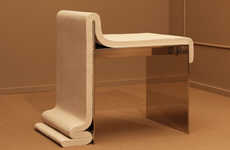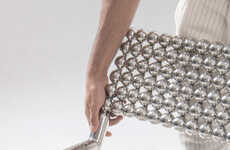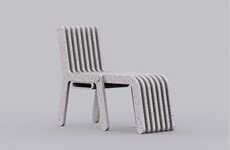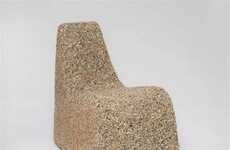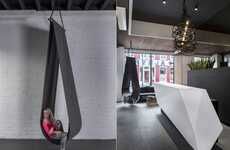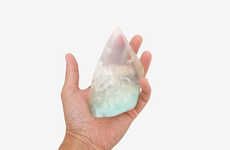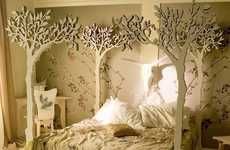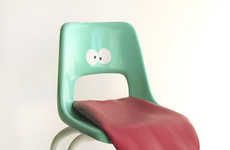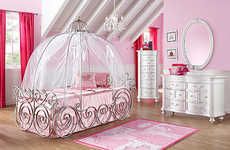
Ezri Tazari's Free Falling Chair is Molded by a Mannequin
Meghan Young — October 24, 2011 — Art & Design
References: tarazistudio & core77
There is an ambiguity about the Free Falling Chair that allows it to be passed for a sculpture or even a piece of trash. It looks as though a hollow cube of sheet metal fell directly on this design, which isn't too far away from the truth.
Created by professor Ezri Tazari, who teaches at Bezalel Academy for Art & Design when not designing industrial objects, the Free Falling Chair is made out of perforated metal sheets that have been folded in a trapezoidal volume shape. A seated mannequin is then dropped right on top of it to create the perfect mold for a human body. Hence the apt name Free Falling Chair.
If you are looking for a unique design, check out this mannequin-molded piece of furniture.
Created by professor Ezri Tazari, who teaches at Bezalel Academy for Art & Design when not designing industrial objects, the Free Falling Chair is made out of perforated metal sheets that have been folded in a trapezoidal volume shape. A seated mannequin is then dropped right on top of it to create the perfect mold for a human body. Hence the apt name Free Falling Chair.
If you are looking for a unique design, check out this mannequin-molded piece of furniture.
Trend Themes
1. Collapsed Perforated Furniture - Using perforated metal sheets that are molded by a mannequin, furniture can be created with a unique appearance that utilizes a falling shape.
2. Ambiguous Furniture Design - Designing furniture that resembles a sculpture or trash can create a unique and eye-catching look that sparks conversation and wonder.
3. Mannequin Molded Furniture - Using mannequins to mold furniture creates a human-like appearance and provides a level of comfort that other molds may not achieve.
Industry Implications
1. Furniture Design - Furniture designers can benefit from using mannequin moldings or perforated metal sheets to create unique pieces that stand out in the market.
2. Industrial Design - Using unconventional materials and shapes in industrial design can create a buzz and differentiate products from competitors.
3. Art & Design Education - Introducing students to unorthodox design materials and methods can aid in the development of disruptive innovation and creative thinking within the art and design education industry.
5.9
Score
Popularity
Activity
Freshness


